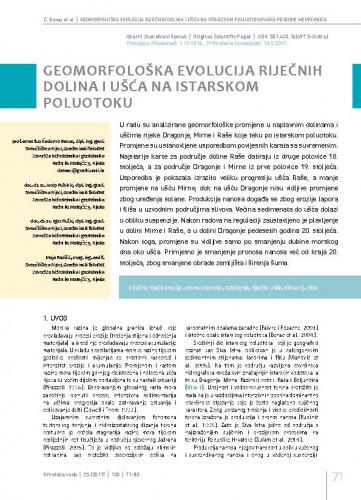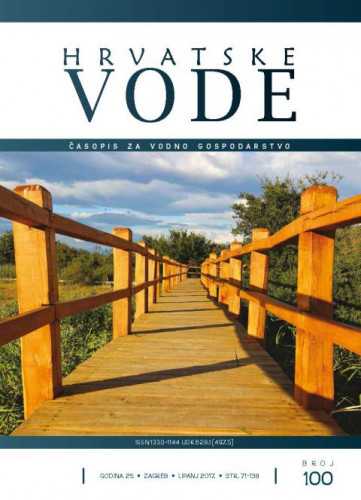U radu su analizirane geomorfološke promjene u naplavnim dolinama i ušćima rijeke Dragonje, Mirne i Raše koje teku po istarskom poluotoku. Promjene su ustanovljene usporedbom povijesnih karata sa suvremenim. Najstarije karte za područje doline Raše datiraju iz druge polovice 18. stoljeća, a za područje Dragonje i Mirne iz prve polovice 19. stoljeća. Usporedba je pokazala izrazito veliku progresiju ušća Raše, a manje promjene na ušću Mirne, dok na ušću Dragonje nisu vidljive promjene zbog uređenja solane. Produkcija nanosa događa se zbog erozije lapora i fliša u uzvodnim područjima slivova. Većina sedimenata do ušća dolazi u obliku suspenzije. Nakon radova na regulaciji zaustavljeno je plavljenje u dolini Mirne i Raše, a u dolini Dragonje pedesetih godina 20. stoljeća. Nakon toga, promjene su vidljive samo po smanjenju dubine morskog dna oko ušća. Primjetno je smanjenje pronosa nanosa već od kraja 20. stoljeća, zbog smanjene obrade zemljišta i širenja šuma..; The paper analyses geomorphological changes in the floodplains and river mouths of the Dragonja, Mirna and Raša which flow through the Istrian peninsula. These changes were determined by comparing the historical and contemporary maps. The oldest maps of the Raša river valley date back to the second half of the 18th century, whereas the maps depicting the Dragonja and Mirna areas originate from the first half of the 19th century. The comparison showed a markedly large progression of the Raša river mouth, minor changes in the Mirna river mouth and no visible changes in the Dragonja river mouth due to the salt works establishment. Sediment production is caused by marl and flysch erosion in the upstream areas of the river basins, the majority of which arrives at the river mouth in the form of a suspension. The river regulation works prevented further flooding in the Mirna and Raša river valleys, including in the Dragonja river valley in the 1950s. Following this, changes can be seen only in the reduced depth of the sea bottom around the river mouth. A reduction in sediment transport was evident already by the end of the 20th century due to reduced land cultivation and forest spreading.
Sažetak
Dio sveska

